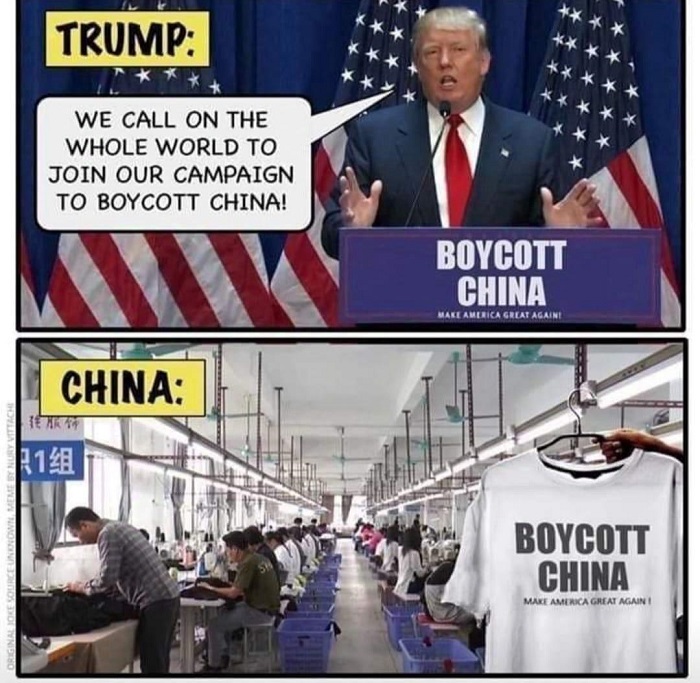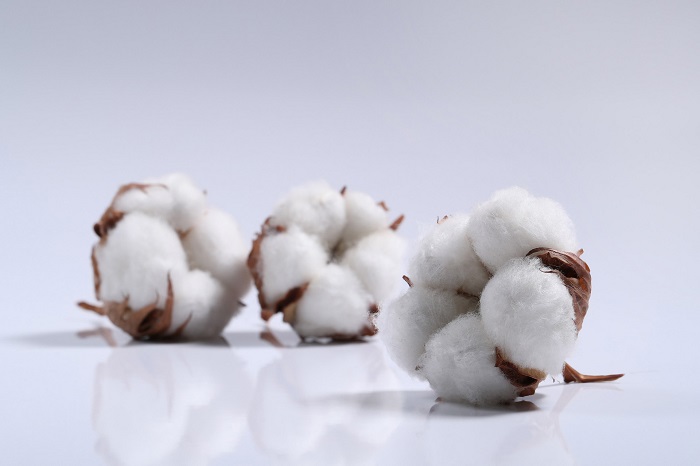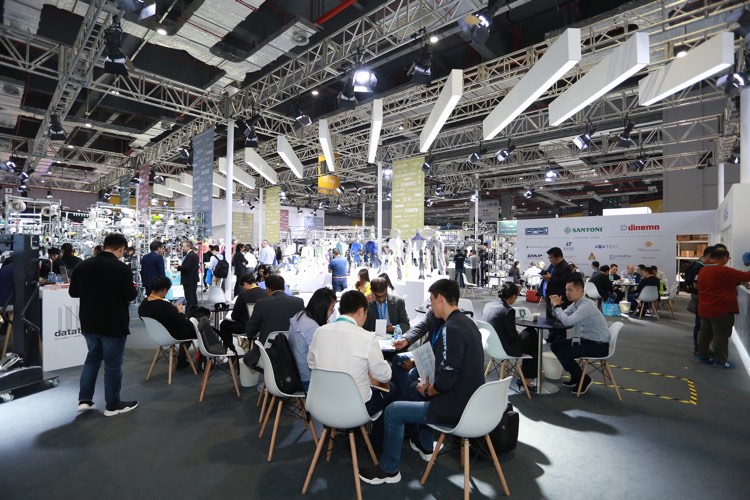FW
The American Apparel & Footwear Association (AAFA) has criticised the collapse of a multilateral trade agreement aimed at streamlining customs procedures worldwide by cutting red tape and speeding up port clearances. World Trade Organization members failed to reach agreement on the Trade Facilitation Agreement (TFA) at a meeting in Geneva July 31.
AAFA says apparel and footwear are some of the most heavily traded consumer goods on the planet and that the failure in Geneva may dramatically damage the WTO. It goes to the extent of saying everybody who wears clothes and shoes will be adversely affected if the TFA is allowed to die.
The TFA, part of a wider package, which was hammered out during a four-day WTO ministerial conference in Indonesia in December, had been hailed as marking a major milestone in global trade. For the apparel industry, on the frontlines of globalisation with a retail value of over $1.3 trillion and a complex worldwide supply chain, the benefits of a deal were seen as especially significant.
AAFA feels failure to conclude the TFA deal removes $1trillion from the world economy and that the clothing and shoe industry requires sophisticated global supply chains so that today’s fashions make their way to consumers all over the world.
The next Texprocess will be held in Germany from May 4 to 7, 2015. Texproces is a leading international trade fair for processing textile and flexible materials. In addition to a sourcing platform, the fair will be supplemented by an extensive complementary program of events, including IT@Texprocess.
Garment manufacturers especially from Latin America, east and south Europe and Africa will be highlighted. Digitalisation, networking and sustainable production processes will play an important role at Texprocess. The show is directed towards providing a single platform for showcasing automation technology for the garment and textile processing industries, CAD/CAM, information technology, cutting, design and product development, distribution logistics and many more.
International suppliers of machines, accessories and services for textile processing will come together with processors of textile materials from all over the world. As in previous years, Texprocess will be held concurrently with Techtexil, the international trade fair for technical textiles and nonwovens.
A total of 1,652 exhibitors and 40,000 international trade visitors attended Texprocess and Techtexil 2013, a new record. Also very successful were Techtexil North America and Texprocess Americas, which were held in May 2014. More than 500 exhibitors and 9,000 visitors made their way to the fairs, an increase of 45 per cent over 2012.
After China decided to end its famous and controversial cotton stockpiling policy, experts feel cotton output in China, the world’s biggest user, may fall 24 per cent next year as the government ends direct purchases from farmers. With policy makers not clarifying how they are going to sustain planting in central and eastern China as the new measures only cover northwest Xinjiang province, national output in 2015 will decline to about five million tons from estimated 6.6 million tons this year.
According to research nby Cncotton.com, Chinese officials are seeking to implement a trial program of direct subsidies to growers in Xinjiang, replacing state-funded stockpiling but there is no indication, whether the same measure will be extended to other inland provinces. Cotton for December delivery fell 0.2 per cent to 62.76 cents a pound on ICE Futures US, in Beijing. The fiber is experiencing its longest run of weekly losses in more than five decades on signs that global demand will trail output.
The end of government stockpiling in China has already impacted plantings this year. Area sown to cotton fell 12.5 per cent from a year ago to 4.2 million hectares, according to Cncotton.com. Xinjiang accounted almost half the nation’s official output of 6.8 million tons last year, according to the China Agricultural Yearbook published by the Ministry of Agriculture. China’s imports will probably fall despite declining domestic production because the government is auctioning as much as 10 million tons of state reserves, as per the Cncotton.com research. The country holds more than half the global cotton inventory, said the US Department of Agriculture.
Jute farmers in Bangladesh are using traditional methods of jute rotting, which cause serious pollution of water. The new system of ribbon retting uses less water to get quality fiber. Jute farmers have been supplied ribbon retting machines for ensuring better quality jute. But for some reason they are not eager enough to use this method.
Despite a scarcity of water farmers are still adopting traditional methods of jute rotting, and so, they are not getting good quality of jute and deprived of fair prices. Jute is traditionally grown for extraction of fiber by a natural microbial process known as retting. Usually mature stems of harvested jute plants are allowed to ret in pond or ditch water. Retting is a preferred rotting process to separate the fiber from woody stem without damaging the fiber cellulose.
In ribbon retting, ribbons are stripped out mechanically from the stem of mature jute plants, coiled and allowed to ret under water. Ribbon retting reduces the time of normal retting by four or five days. Most defects arising from conventional retting can be overcome by ribbon retting. Ribbon retting is a great promise to produce high quality jute fiber and is a more eco-friendly measure.
Global organic cotton production was down by 21 per cent in 2012-13 season. The reason being uncertainty of business, uncertainty of demand, and cash flow challenges. Prices for food crops (such as soya, sugarcane and wheat) are simultaneously becoming more attractive and therefore less risky for farmers than cotton.
In organic cotton production, India remains by far the largest producer, with 73.5 per cent of global production. China, where production has grown by 27 per cent, has now replaced Turkey as the number two producer. Tanzania remains the largest producer in Africa, with 5.9 per cent of production. The US has 1.76 per cent, while all other producing countries are below one per cent.
Cotton makes up 50 per cent of the world’s fiber needs, but the majority of it is grown with toxic chemicals. Conventional cotton production uses a large amount of water. Organic cotton is grown without the use of toxic pesticides or fertilizers. Methods such as beneficial insect releases, strip cutting of alfalfa and new weeding machinery help reduce the environmental impact of cotton crops.
Besides helping the environment, there are other benefits from organic cotton products. Working environments are better for those on farms and small-scale farmers save money by not having to buy large amounts of pesticides.
Yarn Expo Autumn 2014 will be held in Shanghai ,October 20 to 22. The event will feature nearly 150 overseas and domestic yarn suppliers. The focus of the show will be on eco products. Nearly 50 Chinese yarn makers have already confirmed their participation.
Samil Spinning, Korea, will showcase its latest products including Drysil, a new-age performance spun yarn featuring excellent moisture management properties, Porexil, an anti-pilling 100 per cent synthetic air-jet spun yarn, and Hysil, a new ring-spun yarn. PT Indorama Synthetics, Indonesia, will promote its open-end cotton yarns and cotton combed compact yarns for knitting and weaving applications.
Yarn Expo showcases a wide spectrum of natural and blended yarns including cotton, wool, flax or regenerated flax, and man made fibers and yarns as well as specialty products including elastic, and fancy and blended yarns. The show is an ideal opportunity for overseas buyers to gain access to some of the leading domestic suppliers in the industry. With both spring and autumn editions in Shanghai, the show provides an excellent opportunity for overseas suppliers to build stronger relationships in the region and increase their presence in the market.
The fair will be held concurrently with Intertextile Shanghai Apparel Fabrics 2014, October 20 to 23, and PH Value, October 20 to 22.
www.yarn-expo-autumn.hk.messefrankfurt.com/
Yarn Expo Autumn 2014 will be held in Shanghai ,October 20 to 22. The event will feature nearly 150 overseas and domestic yarn suppliers. The focus of the show will be on eco products. Nearly 50 Chinese yarn makers have already confirmed their participation.
Samil Spinning, Korea, will showcase its latest products including Drysil, a new-age performance spun yarn featuring excellent moisture management properties, Porexil, an anti-pilling 100 per cent synthetic air-jet spun yarn, and Hysil, a new ring-spun yarn. PT Indorama Synthetics, Indonesia, will promote its open-end cotton yarns and cotton combed compact yarns for knitting and weaving applications.
Yarn Expo showcases a wide spectrum of natural and blended yarns including cotton, wool, flax or regenerated flax, and man made fibers and yarns as well as specialty products including elastic, and fancy and blended yarns. The show is an ideal opportunity for overseas buyers to gain access to some of the leading domestic suppliers in the industry. With both spring and autumn editions in Shanghai, the show provides an excellent opportunity for overseas suppliers to build stronger relationships in the region and increase their presence in the market.
The fair will be held concurrently with Intertextile Shanghai Apparel Fabrics 2014, October 20 to 23, and PH Value, October 20 to 22.
www.yarn-expo-autumn.hk.messefrankfurt.com/
Welspun India has declared quarterly earnings with consolidated sales reaching Rs 1,012.68 crores with net profit of Rs 104.96 crores compared to Rs 849.9 crores in sales and Rs 89.87 crores during the year-ago quarter. Now, the company has decided to focus on the domestic market to maintain earnings and profit levels. The company reported 21 per cent growth on the topline and about 24 per cent improvement in EBITDA, while margins increased 0.5 point higher as compared to same quarter, last year.
Welspun’s debt was at Rs 2,700 crores at the end of FY14. This quarter, the net debt remained the same despite the capital expenditure plan undertaken by the company. The company plans to invest around Rs 2,500 crores over fiscal years 2014-15 and 2015-16. Since China is facing labour issues with wage rates tripling over the last four-five years, Indian cotton textile producing companies like Welspun are at an advantage.
Last year, promoters increased their stake by 5 per cent in the company and they are eyeing to raise it to 75 per cent. As a company, Welspun has made large investment in creating capacities across the entire textile manufacturing, from spinning to weaving to dyeing, processing and finishing.
The Japanese company Toray has developed the world’s first fully plant-based polyester yarn made exclusively from renewable raw materials. Toray specializes in functional fabrics. Until now, only partly plant-based polyesters were in the market. The new polyester consists of starch and treacle, a by-product of sugar production. It is recognized as the next step in the sustainable textile industry and can be recyled. It can be used for fabrics and membranes for garments as well as for bottles and packaging. The polymer is chemically identical to existing polyester from crude oil.
The Toray group fuses nanotechnology into its operations, using organic synthetic chemistry, polymer chemistry and biotechnology as its core technologies. In addition to the foundation businesses of fibers and textiles and plastics and chemicals, Toray likewise promotes the global development of IT-related products, carbon fiber composite materials, pharmaceuticals and medical products, environment and engineering including water treatment and progress in other pivotal business fields.
The company has developed waterless printing that’s friendly to the environment. It has developed a printing system that uses silicone to replace the dampening solution. This revolutionary printing system realizes not only high quality printing but also improvements in productivity.
www.toray.in/
The 17th international exhibition on textile industry ShanghaiTex 2015 will be held from June 15-18, 2015 at the Shanghai New International Expo Centre. The theme will be organic clothing. There are seven theme zones and more than 100,000 sq. mt. of exhibition area. In response to market trend and to exploit new market, the event will showcase the latest spinning and weaving technology for organic textile production.
Along with the rapid economic development and general living standard, the textile market has also undergone changes on consumption pattern. There is growing demand for organic clothing in China, especially in underwear, sleepwear, infant wear and maternity clothing products categories. Though at this moment, shops selling organic clothes are not easy to find but it is estimated that organic cotton products will spread up in three to five years.
It is important to ensure that organic clothing is harmless and chemical-free from the seed until the finished product. The complete production process must be isolated and the production tools should be dedicated for organic products only. Organic product producers should make sure that the raw materials, production process as well as the packaging are up to certificated requirements and standard.
Although demand for organic cotton is booming, organic cotton production has continued to decline. Prior to 2011, organic cotton production continues to rise, however, production fell by 8 per cent in the recent years. Organic cotton does not use pesticides so the yield is very low, coupled with the lack of planting knowledge which become the main reason for the decline in production.
Organic cotton production is an important part of sustainable development. It is significant to the ecosystem, development of human health and to meet consumer demand. It is expected that the popularity of organic cotton products will grow and dominates the market.
www.shanghaitexonline.com












